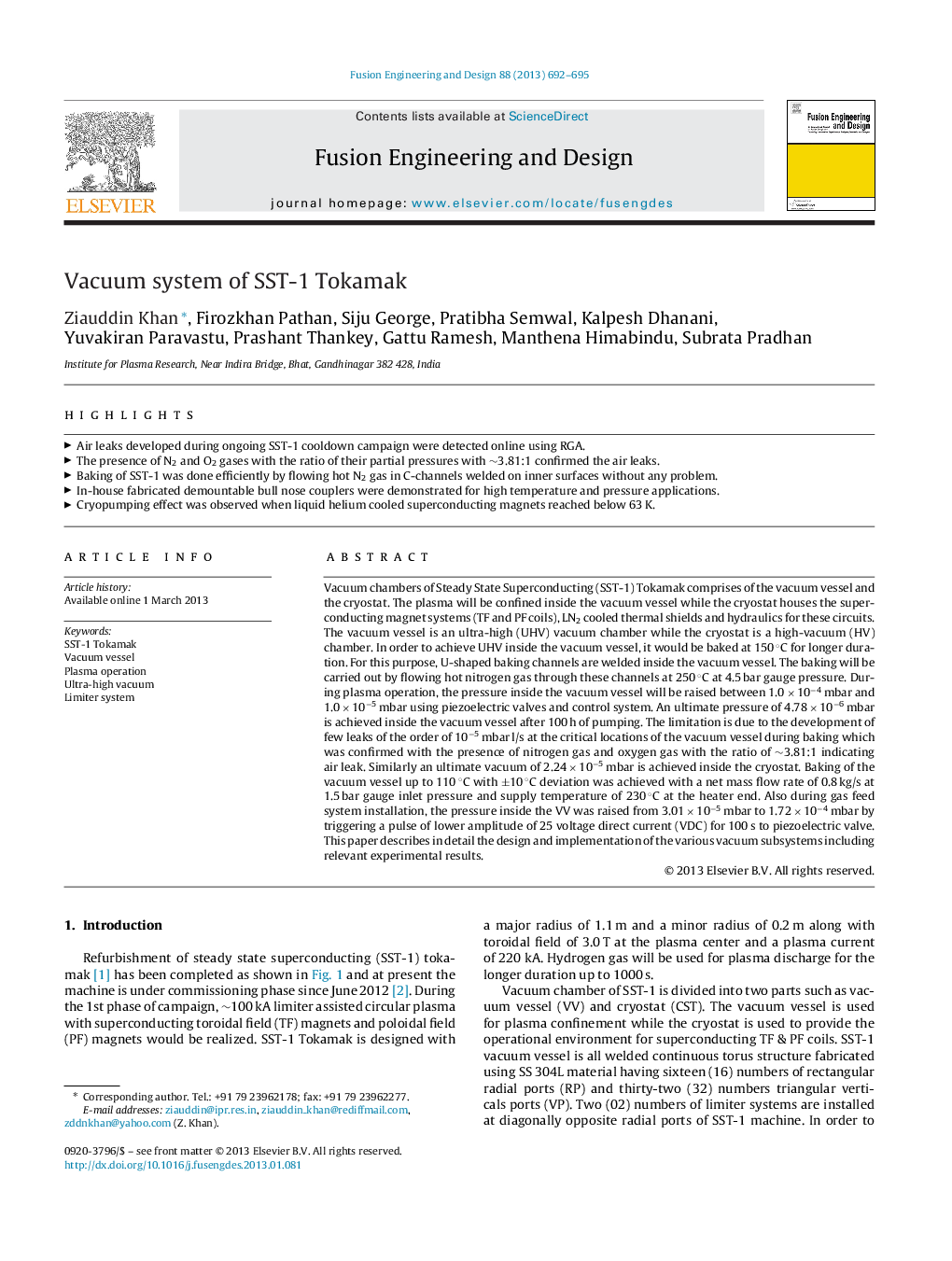| Article ID | Journal | Published Year | Pages | File Type |
|---|---|---|---|---|
| 271749 | Fusion Engineering and Design | 2013 | 4 Pages |
Vacuum chambers of Steady State Superconducting (SST-1) Tokamak comprises of the vacuum vessel and the cryostat. The plasma will be confined inside the vacuum vessel while the cryostat houses the superconducting magnet systems (TF and PF coils), LN2 cooled thermal shields and hydraulics for these circuits. The vacuum vessel is an ultra-high (UHV) vacuum chamber while the cryostat is a high-vacuum (HV) chamber. In order to achieve UHV inside the vacuum vessel, it would be baked at 150 °C for longer duration. For this purpose, U-shaped baking channels are welded inside the vacuum vessel. The baking will be carried out by flowing hot nitrogen gas through these channels at 250 °C at 4.5 bar gauge pressure. During plasma operation, the pressure inside the vacuum vessel will be raised between 1.0 × 10−4 mbar and 1.0 × 10−5 mbar using piezoelectric valves and control system. An ultimate pressure of 4.78 × 10−6 mbar is achieved inside the vacuum vessel after 100 h of pumping. The limitation is due to the development of few leaks of the order of 10−5 mbar l/s at the critical locations of the vacuum vessel during baking which was confirmed with the presence of nitrogen gas and oxygen gas with the ratio of ∼3.81:1 indicating air leak. Similarly an ultimate vacuum of 2.24 × 10−5 mbar is achieved inside the cryostat. Baking of the vacuum vessel up to 110 °C with ±10 °C deviation was achieved with a net mass flow rate of 0.8 kg/s at 1.5 bar gauge inlet pressure and supply temperature of 230 °C at the heater end. Also during gas feed system installation, the pressure inside the VV was raised from 3.01 × 10−5 mbar to 1.72 × 10−4 mbar by triggering a pulse of lower amplitude of 25 voltage direct current (VDC) for 100 s to piezoelectric valve. This paper describes in detail the design and implementation of the various vacuum subsystems including relevant experimental results.
► Air leaks developed during ongoing SST-1 cooldown campaign were detected online using RGA. ► The presence of N2 and O2 gases with the ratio of their partial pressures with ∼3.81:1 confirmed the air leaks. ► Baking of SST-1 was done efficiently by flowing hot N2 gas in C-channels welded on inner surfaces without any problem. ► In-house fabricated demountable bull nose couplers were demonstrated for high temperature and pressure applications. ► Cryopumping effect was observed when liquid helium cooled superconducting magnets reached below 63 K.
